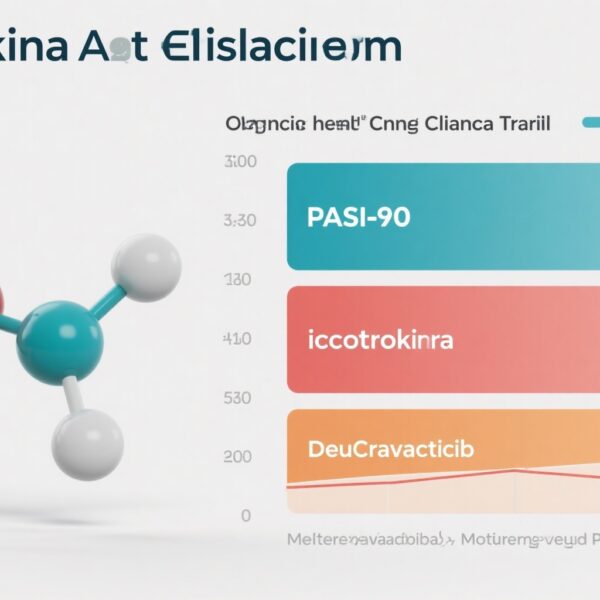Highlights
- The VICTOR trial is the largest phase 3 randomized study investigating vericiguat in chronic HFrEF patients without recent worsening events.
- Vericiguat did not significantly reduce the composite endpoint of cardiovascular death or heart failure hospitalization compared to placebo in this population.
- Notably, vericiguat was associated with a nominal reduction in cardiovascular and all-cause mortality.
- The safety profile was consistent with previous vericiguat studies, with symptomatic hypotension more frequent but serious adverse events comparable to placebo.
Background
Heart failure with reduced ejection fraction (HFrEF) remains a leading cause of morbidity and mortality globally. Current guideline-directed medical therapies (GDMT) include inhibitors of the renin-angiotensin-aldosterone system, beta-blockers, mineralocorticoid receptor antagonists, and sodium-glucose cotransporter 2 inhibitors, which substantially improve outcomes. However, residual risk persists, especially after clinical worsening events, which markedly increase hospitalization and mortality risk.
Vericiguat, a soluble guanylate cyclase (sGC) stimulator, targets the nitric oxide–sGC–cyclic guanosine monophosphate (cGMP) pathway, which is impaired in heart failure pathophysiology, contributing to myocardial and vascular dysfunction. Prior studies, including the VICTORIA trial, established vericiguat’s efficacy in patients with HFrEF following recent worsening events, showing reduced cardiovascular death or heart failure hospitalization.
The VICTOR trial was designed to address the gap pertaining to vericiguat’s effect in patients with HFrEF but without recent heart failure exacerbations, a common and clinically relevant subgroup underrepresented in prior vericiguat trials.
Key Content
Study Design and Patient Population
The VICTOR trial was a multinational, double-blind, placebo-controlled phase 3 randomized controlled trial conducted across 482 sites in 36 countries, enrolling 6105 adults aged ≥18 years with chronic HFrEF (LVEF ≤40%) but no heart failure hospitalization within the past 6 months or outpatient intravenous diuretics within 3 months.
Patients were randomized 1:1 to vericiguat (target oral dose 10 mg daily) or matching placebo, in addition to optimized GDMT. The primary composite endpoint was time to cardiovascular death or first heart failure hospitalization, analyzed in an intention-to-treat manner. Safety outcomes were assessed in patients who received ≥1 dose.
Baseline Characteristics
Median age was 68 years, predominantly male (76.4%), with a substantial proportion (47.5%) without previous heart failure hospitalization. The cohort was ethnically diverse, with 64.4% White participants. The study population generally reflected stable chronic HFrEF patients without recent decompensation.
Primary and Secondary Outcomes
Over a median follow-up of 18.5 months, the primary composite endpoint occurred in 18.0% vs. 19.1% of vericiguat and placebo groups, respectively (HR 0.93; 95% CI 0.83–1.04; p=0.22), indicating no statistically significant benefit.
Secondary endpoint analyses, interpreted nominally due to primary endpoint results, showed a reduction in cardiovascular death with vericiguat (HR 0.83; 95% CI 0.71–0.97) and a non-significant difference in heart failure hospitalization (HR 0.95; 95% CI 0.82–1.10). All-cause mortality was also lower with vericiguat (HR 0.84; 95% CI 0.74–0.97).
Safety Profile
Serious adverse event rates were comparable (23.5% vericiguat vs. 24.6% placebo). The most frequent adverse event was symptomatic hypotension occurring more often with vericiguat (11.3%) than placebo (9.2%). No new safety signals emerged, supporting the established tolerability of vericiguat.
Contextualizing VICTOR Within the Vericiguat Evidence Base
Previous pivotal evidence notably comes from the VICTORIA trial (N Engl J Med, 2020), which enrolled patients with HFrEF and a recent worsening event, demonstrating a significant 10% relative risk reduction in the primary composite endpoint. VICTOR’s distinct patient profile—stable HFrEF without recent worsening—suggests that vericiguat’s benefits may be more prominent post-decompensation rather than in stable chronic disease.
This delineates disease staging relevance for vericiguat indication, consistent with pathophysiology-driven logic that sGC stimulation counters hemodynamic and myocardial stress exacerbated during or soon after worsening episodes.
Expert Commentary
The VICTOR trial enhances our understanding of vericiguat’s clinical role by clarifying its limited efficacy in stable chronic HFrEF absent recent worsening. The lack of significant primary endpoint benefit raises questions about broadening vericiguat use beyond post-worsening patients.
Nonetheless, the observed nominal decreases in cardiovascular and all-cause mortality are intriguing, warranting hypothesis generation and potentially future investigations focused on mortality endpoints or specific subpopulations.
Mechanistically, vericiguat’s effect might be context-dependent, potentiated by the hemodynamic and neurohormonal disturbances present following decompensation but less critical in stable disease.
Guideline interpretations may thus emphasize vericiguat primarily for patients with recent heart failure events, in line with current ESC and ACC/AHA/HFSA guidelines, while the VICTOR data counsel caution against off-label use in stable populations.
Potential study limitations include the heterogeneity of GDMT adherence and the relatively modest event rates reflecting a lower-risk population. The trial’s robust size and international scope support generalizability, though longer-term outcomes remain to be elucidated.
Conclusion
The VICTOR phase 3 trial demonstrates that vericiguat does not significantly reduce the combined risk of cardiovascular death or heart failure hospitalization in patients with chronic HFrEF without recent worsening events. However, reductions in cardiovascular and all-cause mortality observed warrant further exploration.
These findings refine clinical indications for vericiguat, underscoring the primacy of recent worsening as a criterion for therapy initiation. Future research may focus on mechanistic insights, long-term outcomes, and the identification of responsive subgroups.
This trial contributes critically to precision therapy in HFrEF, integrating clinical phenotyping, therapeutic timing, and mechanistic targeting.
References
- Butler J, McMullan CJ, Anstrom KJ, et al.; VICTOR Study Group. Vericiguat in patients with chronic heart failure and reduced ejection fraction (VICTOR): a double-blind, placebo-controlled, randomised, phase 3 trial. Lancet. 2025 Sep 27;406(10510):1341-1350. doi: 10.1016/S0140-6736(25)01665-4. PMID: 40897189.
- Armstrong PW, Pieske B, Anstrom KJ, et al. Vericiguat in patients with heart failure and reduced ejection fraction. N Engl J Med. 2020;382(20):1883-1893. doi:10.1056/NEJMoa1915928.
- McMurray JJV, Packer M, Desai AS, et al. Angiotensin-Neprilysin Inhibition versus Enalapril in Heart Failure. N Engl J Med. 2014;371(11):993-1004. doi:10.1056/NEJMoa1409077.
- Ponikowski P, Voors AA, Anker SD, et al. 2016 ESC Guidelines for the diagnosis and treatment of acute and chronic heart failure. Eur Heart J. 2016;37(27):2129-2200. doi:10.1093/eurheartj/ehw128.


